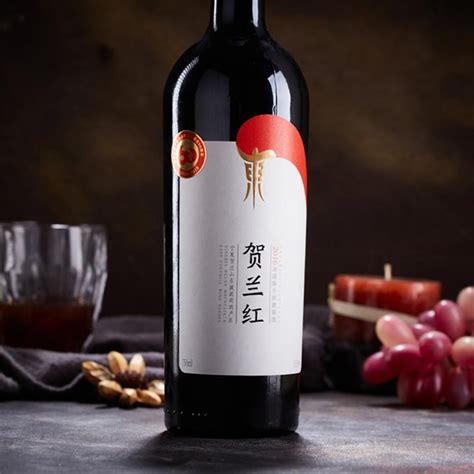红酒redwine什么意思
Exploring the World of Red Wine
Red wine, with its rich history, diverse varieties, and complex flavors, is a beloved beverage enjoyed by connoisseurs and casual drinkers alike. Let's delve into the fascinating world of red wine, exploring its origins, popular grape varieties, production process, tasting notes, and serving recommendations.
Origins:
The origins of red wine date back thousands of years, with evidence of winemaking dating as far back as 6000 BC in regions like presentday Georgia and Iran. Ancient civilizations such as the Egyptians, Greeks, and Romans further developed winemaking techniques, spreading viticulture across Europe and eventually to other parts of the world.
Popular Grape Varieties:
1.
Cabernet Sauvignon
: Known for its bold flavors of blackcurrant, plum, and cedar, Cabernet Sauvignon is one of the world's most widely recognized red wine grape varieties. It thrives in regions like Bordeaux, Napa Valley, and Coonawarra.2.
Merlot
: Merlot offers a softer, fruitforward profile with notes of cherry, plum, and chocolate. It's often blended with Cabernet Sauvignon to add complexity and smoothness. Bordeaux, Tuscany, and Washington State are renowned for their Merlot production.3.
Pinot Noir
: Pinot Noir is celebrated for its elegant, nuanced flavors of red berries, floral notes, and earthy undertones. It's famously associated with Burgundy in France but also flourishes in regions like Oregon, New Zealand, and California.4.
Syrah/Shiraz
: Syrah/Shiraz produces robust wines with flavors of blackberry, pepper, and smoke. While originating in France's Rhône Valley, it has gained popularity in regions such as Australia's Barossa Valley, California, and South Africa.5.
Malbec
: Malbec is known for its deep purple color and bold flavors of dark fruits, tobacco, and cocoa. It's primarily associated with Argentina, where it thrives in the highaltitude vineyards of Mendoza.6.
Zinfandel
: Zinfandel offers rich, jammy flavors of blackberry, raspberry, and spice. While it has historical roots in Croatia, it's primarily associated with California, particularly in regions like Sonoma and Paso Robles.Production Process:
The production of red wine involves several key steps:
1.
Harvesting
: Grapes are harvested by hand or machine, depending on the vineyard's practices and grape variety.2.
Crushing and Destemming
: Grapes are crushed to release their juice, and the stems are removed. This process can occur either before or after fermentation.3.
Fermentation
: Yeast is added to the grape juice to initiate fermentation, during which sugars are converted into alcohol. Red wines typically undergo fermentation with the grape skins, extracting color, tannins, and flavor compounds.4.
Aging
: Red wines may undergo aging in various vessels, including oak barrels, stainless steel tanks, or concrete vats. Oak aging imparts additional flavors and textures to the wine.5.
Blending
: In some cases, winemakers blend different grape varieties or batches of wine to achieve the desired flavor profile and consistency.6.
Bottling
: Once the wine has matured, it is bottled and may undergo further aging in the bottle before release.Tasting Notes:
When tasting red wine, consider the following aspects:
1.
Appearance
: Note the wine's color, intensity, and clarity.2.
Aroma
: Inhale deeply to identify the wine's bouquet, noting any fruit, floral, spice, or earthy aromas.3.
Palate
: Take a sip and assess the wine's flavors, acidity, tannins, and body. Pay attention to the wine's texture and finish.4.
Overall Impression
: Consider how the wine evolves in the glass and your overall enjoyment of it.Serving Recommendations:

To fully appreciate red wine, follow these serving recommendations:
1.
Temperature
: Serve red wine at the appropriate temperature, typically between 6068°F (1620°C), depending on the wine's style. Lighterbodied reds are best served slightly chilled, while fullerbodied reds benefit from slightly warmer temperatures.2.
Decanting
: Consider decanting younger, tannic red wines to aerate them and enhance their aromas and flavors. Older red wines may also benefit from decanting to separate any sediment and allow the wine to breathe.3.
Glassware
: Use wine glasses with a large bowl and tapered rim to concentrate the wine's aromas and direct them toward the nose.4.
Food Pairing
: Pair red wine with a variety of foods, including red meats, poultry, game, pasta, cheese, and dark chocolate. Consider the wine's acidity, tannins, and flavor profile when selecting food pairings.In conclusion, red wine offers a captivating journey of discovery, from its diverse grape varieties to its intricate production process and sensory pleasures. Whether you're a seasoned enthusiast or a curious newcomer, there's always something new to explore and enjoy in the world of red wine.
Cheers to the Timeless Elegance of Red Wine!
1.本站遵循行业规范,任何转载的稿件都会明确标注作者和来源;2.本站的原创文章,请转载时务必注明文章作者和来源,不尊重原创的行为我们将追究责任;3.作者投稿可能会经我们编辑修改或补充。








